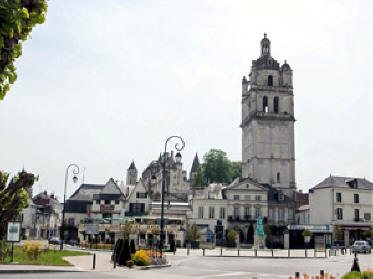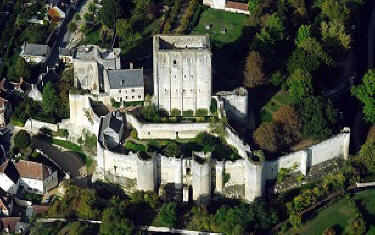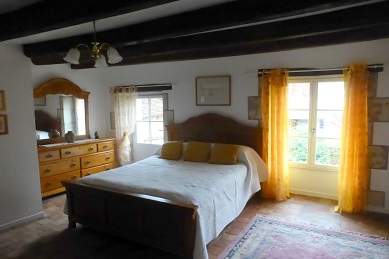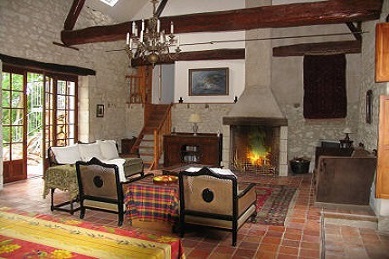|
Loches Dunjon

You cannot fail to notice the castle keep
(donjon) as you drive into the Sothern Touraine
town of Loches in the Loire Valley - its lofty
situation, well chosen by Foulques (Fulk) Nerra
the Count d'Anjou, the 10th century prolific
fortress builder, makes it the first thing you
notice on the skyline.
This was one
of a number of strongholds built by the
formidable Count of Anjou - although completed
by his son Geoffrey Martel. This along with
others at Langeais and Montbazon were to help
secure his grip on the territory of Touraine and
help keep his rival counts at bay.
His
descendant, Henry Plantagenet (Henry II),
inherited the English throne in 1154 and adding
this to his territories in France made him one
of the most powerful men in Europe. Faced with
the task of constantly defending his possessions
in a time when there was little peace, he
strengthened the already formidable
fortifications at Loches.
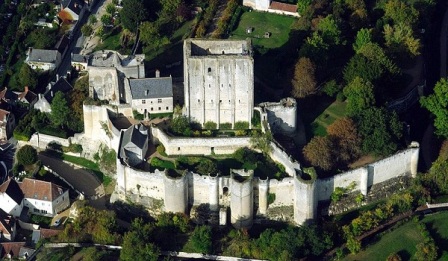
Aerial view from the West towards
the donjon.
© Lieven Smits (Own work) [GFDL
or CC-BY-SA-3.0-2.5-2.0-1.0], via Wikimedia
Commons
The fortress was fought for over the decades by
the ruling Plantagenets and the French. King
Richard (the Lionheart) had succeeded to the
English throne and its French territories after
a turbulent period of war, family unrest and of
course the death of Henry II.
In 1193 after being left in the protective
custody of John Lackland* (the eventual King
John) while the king brother Richard (The
Lionheart) went off on the crusades it was
easily taken by Philip Augustus of France. On
Richard's return a year later, according to
legend, he took it back after only a three hour
siege. When you look at the fortifications this
was no mean feat! It stayed in English hands
until 1205 when Philip again
took possession this time after a year long
siege, this episode effectively marked the end
of the presence of the Plantagenets in Loches.
*:Did
you know this came from the name the French
had for him
'Johan
sanz Terre'- (John without land) due to the
fact that his father struggled to find him a
title and lands. Lack land -get it?
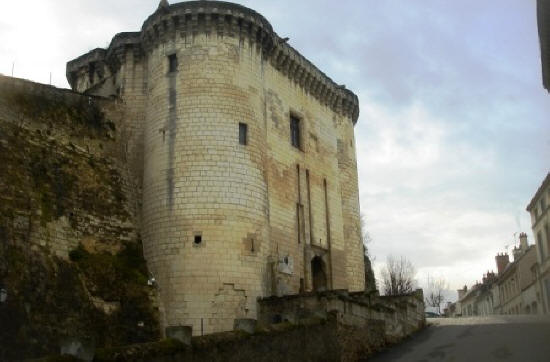
Entrance into the fortified complex is via
the13th century gate, 'Porte Royale' which was
built on the western ramparts, you make your way
up through and head straight up the little
narrow street before turning right along the
route to the 'donjon' or keep itself Left takes
you to the 'Royal Lodgings' (Chateau).
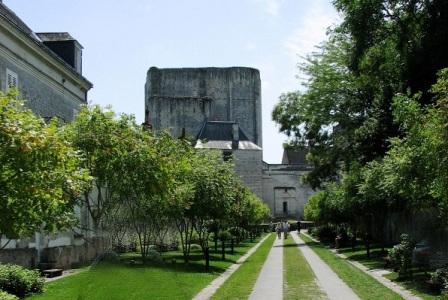
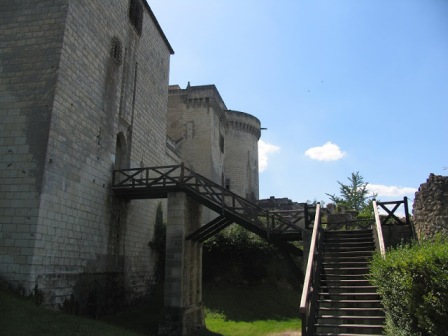
Before making your way up the wooden stairs
to the entrance take time to wander around
the exterior of the buildings - you won't be
disappointed.
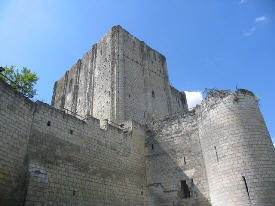
It
remained a military fortress until the
middle of the 15th century. It eventually
became astate prison and was still used up
until the beginning of the 19th century.
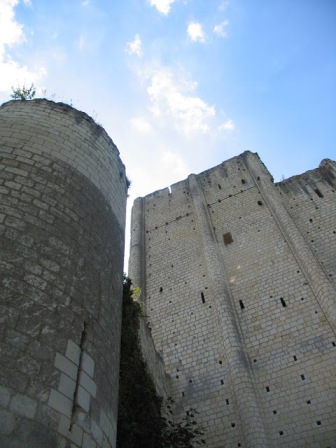

It is
interesting to think, as you walk around,
that you are walking in a garden where
'Richard the
Lionheart' and John Lackland once strolled.
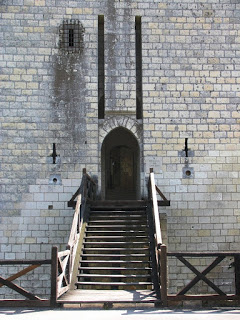
As you make your way up the steps via the
15th century barbican you immediately feel
you are about to be immersed in history.
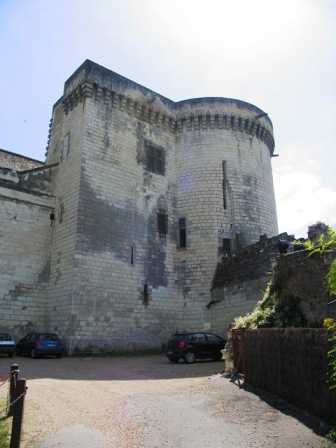
Once inside there are a number of different
aspects to explore.. You first wander
through the 14th century 'Governor's
residence' before making your way to Louis
XI tower (above) with its viewing terrace.

Looking back down to the
barbican from the terrace.
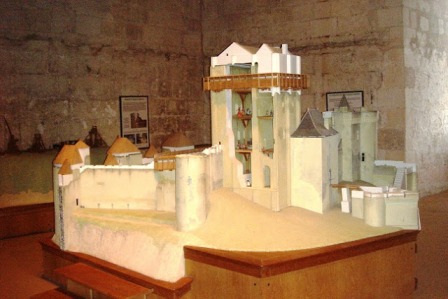
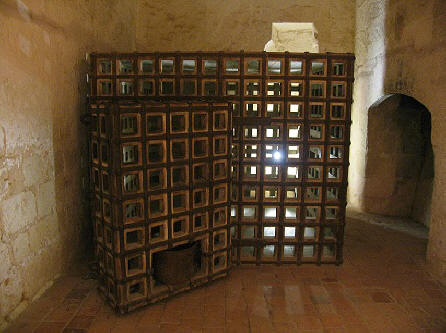
Inside there are a number of
interesting areas such as the 'model room'
giving you a better
idea of the fortress's
construction and use. You can also see some
ancient graffiti left by
previous
'residents', a torture chamber and the cage
in which Cardinal Balue, an enemy of
Louis
XI was apparently held for three years
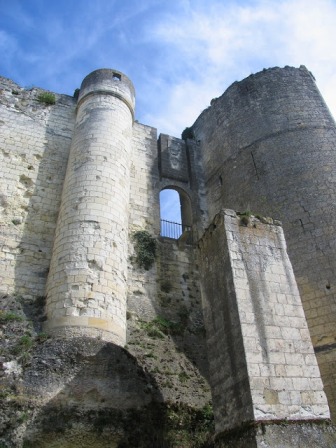
You can then move on to the 15th century 'Martelet'
which leads you into a network of 11th century
subterranean passageways -from where some of the
stone used was quarried from. The tower was used
as a prison for political prisoners and there is
a reconstruction of a cell for you to view
within it. If you walk down through the caves
you can exit the complex on Bd,Philippe Auguste.

The keep at the 'Donjon' at Loches was one of
thirteen such towers built at the beginning of
the 11th century by Foulques Nerra the Count
d'Anjou . The square tower is 36 metres high and
the fact that it is still standing today
is testament to just how well it was built.
Although today, what you see from the outside is
virtually all that remains as the floors and
roof have been lost to time.

From inside you easily
make out the different floor levels and the
fireplaces serving them. The ground floor of
the tower would have been used as a store
the first floor would have housed the 'grande
salle' or great hall which would have been
used as a reception and entertaining room.
The other levels would have been the private
residence of whoever was occupying the
fortress as the time. The top level would
also have been where they
would retreat
in less peaceful times.
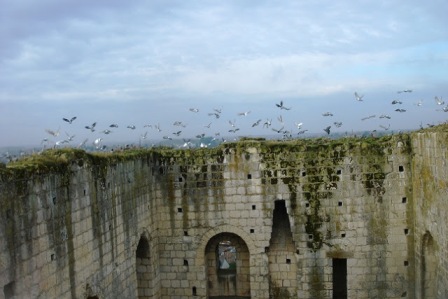
There is a walkway that takes you up the
interior of the walls, not for the
faint-hearted, which allows access to the
top of the tower. Once you chase off the
current residents you can take advantage of
the great views from the top platform of the
surrounding area.
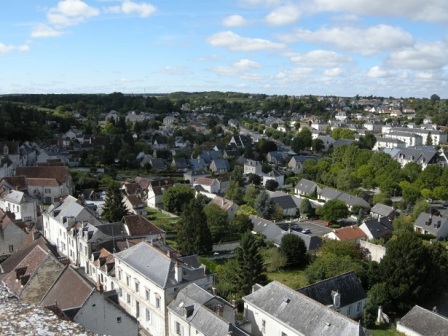
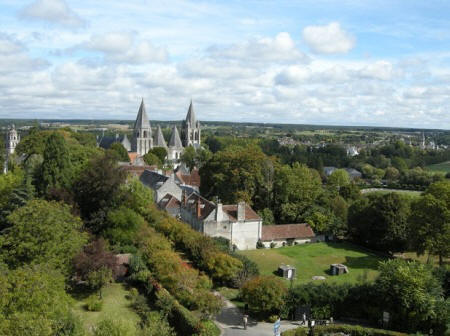
St.Ours church.
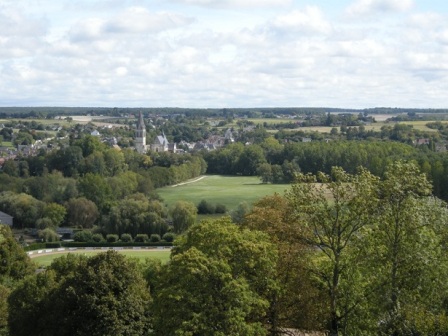
Looking further on to
the neighbouring town of Beaulieu-les-Loches,
it is well worth making the climb!
|










